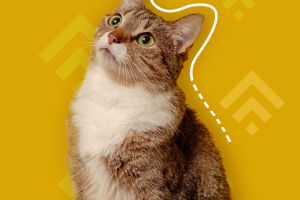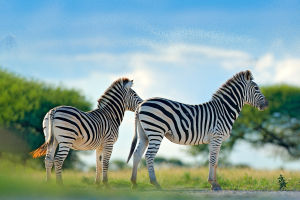The Texas Longhorn is a breed of longhorn cattle that are descended from the first cattle brought to the Americas by explorer Christopher Columbus and Spanish colonists. The average distance between the tips of its two horns can extend to more than 2.54 meters, the largest of which has a distance of 3.29 meters between the two horns.
This longhorn is owned by Richard Furth, near Texas. These cattle are highly drought tolerant. Texas Longhorns are known for their variety of colors, but crimson and white are the dominant colors in the mix. Because of their natural gentleness and intelligence, Texas longhorns are increasingly being trained to turn to ride, including in parades.
Texas Longhorn, once a Texas Longhorn grew a horn of 2.7 meters, breaking the world record for the longest horn in the world. If the horn is an attack weapon, what other animal would dare to provoke it?
Texas longhorn cattle are produced in the hot regions of the southern United States and are suitable for long-distance grazing cattle. There are Texas longhorn cattle of different colors, so many tourists will also go to watch Dirk in order to see the horns. Saas Longhorn!
Everyone is afraid of the horns of the Texas Longhorns. In fact, although their horns are very long, they are actually very gentle and generally do not attack humans.
Although it will not attack humans, for self-protection, the horns are too long and it is easy to accidentally hurt people. Warnings are necessary. With such long horns, people are likely to be scratched by the horns when they move near them, so be careful!
The horn growth of Texas Longhorns is such that their horns will grow to 50% of their total length at the age of one year, and to 95% at the age of 5 and 6 years. As these bulls get older, the rate of horn growth slows down rapidly.
The horns grow out of the base, so the "growth rings" can be seen on the heads of older longhorns.
The Texas Longhorn is a gentle animal that grazes freely in the grass and is also a lovely animal.
In addition to Texas longhorns that have this characteristic, many other cattle also have long horns.
Ankole-watusi cow: It comes from central Africa. The biggest feature is that the horns are very large. In the early 20th century, it was brought to Germany as a zoo-breeding species, and from there it spread to other zoos in Europe.
Some people also began to introduce themselves to the United States, and in 1960, began to cross-breed in New York State. In 2016, the breed's total population was about 1,500, with about 80 percent in the United States.
Anker Watusi may come in a variety of colors, but it is usually red. The horns are unusually large and have the largest circumference of any horn. The Guinness Book of World Records once listed a bull named CT Woodie with a horn circumference of 103.5 cm.
highland cow: The highland cow is a breed of domestic cattle native to the Scottish Highlands, characterized by long coats and long horns. There are red, black, yellow, dark brown, variegated, and other colors. It is also a kind of cattle that has existed for a long time. Scientists speculate that the ice age was not over yet.
The European bison crossed the land bridge and came to British land. Then the glaciers melted and the sea level rose, and they could never return to the European continent.
These migrating cattle were mated with local bison. There were no other breeds in the Scottish range at the time, so the shorthorn and the bison became the ancestors of the Highland cattle, and the ancestral characteristics were passed on.
Highland cattle are strong and can survive even in the harsh weather of the Scottish Highlands and islands. The cows in the remote highlands are larger and have reddish coats, while those in the western islands are smaller and darker.
Today, the highland cattle of these two places are designated as one breed, and the coat color is red, black, light brown, yellow, and even white. Bulls can grow up to 800 kg.
Cows can also grow up to 500 kg. Highland cattle's fluffy, cute-looking forehead is very useful, protecting against wind, rain, and snow in winter, and repelling flying insects that spread viruses in summer.


